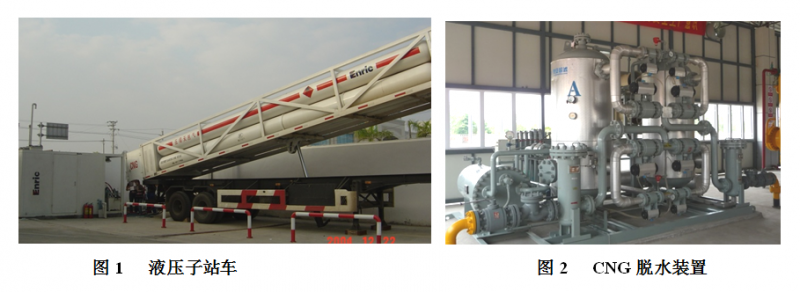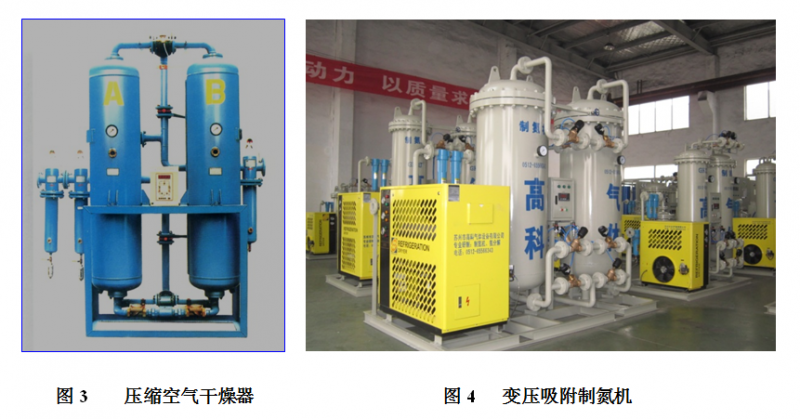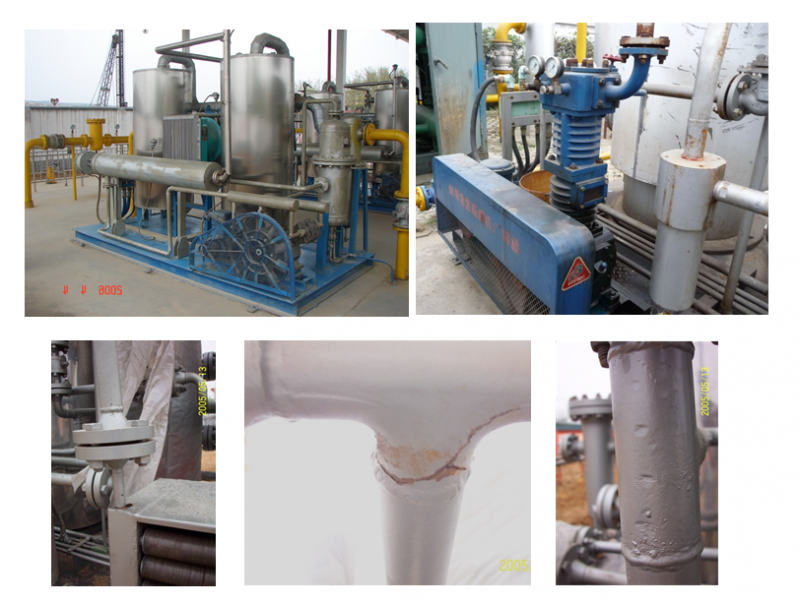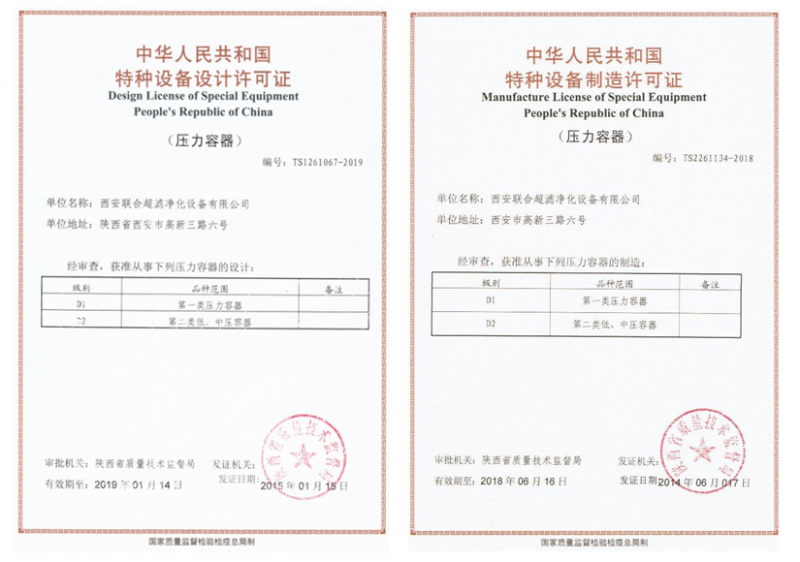Preface: On May 9, 2012, the Special Equipment Safety Supervision Bureau of the General Administration of Quality Supervision, Inspection and Quarantine issued the document QMTC Letter [2012] No. 32. This document mainly stipulates specific safety supervision requirements (design, manufacturing qualifications, production, supervision inspection and other requirements) for the rapidly developing natural gas refueling station storage and transportation equipment, including: CNG hydraulic sub-station vehicles, station gas cylinders, LNG mobile refueling devices, and gas cylinders and other pressure-bearing equipment. The third item, regarding the skid-mounted pressure-bearing system, stipulates that a system of skid-mounted pressure-bearing equipment containing multiple pressure vessels and pressure pipelines, similar to the CNG dehydration device, shall implement safety supervision requirements such as special equipment design and manufacturing licenses, laying the foundation for standardizing the design and manufacturing of such equipment and ensuring long-term safe operation, and accordingly raising the entry threshold for such equipment.

1. Review:
1.1 Application scope, initiation and current status: The natural gas dehydration unit is mainly applied in CNG vehicle refueling stations, which is one of the four key equipment in the refueling station. Other applications include coalbed methane extraction and transportation, discrete wells in natural gas fields, flare gas recovery, LPG, LNG, and biogas purification, etc. The CNG vehicle refueling station began to be established in the Sichuan and Chongqing regions in the late 1980s, and entered the national promotion in the mid-1990s. The dehydration unit in the CNG vehicle refueling station started to be produced in a specialized and small-scale manner. Currently, the Xi'an ultrafiltration plant with the largest production scale started in 2000, relying on its original purification technologies and products for compressed air, industrial gases, and medium and high-pressure gas sources, and entering the natural gas field. Five years later, the output reached hundreds of units, with the highest year reaching 150 units. Currently, there are about 15 manufacturing plants, with an annual production of approximately 300 to 500 units, and a small amount of exports. Among them, less than five manufacturers are mainly engaged in natural gas dehydration units, while the rest are either engaged in auxiliary production or just starting. By the end of 2014, about 3,000 CNG refueling stations have been built in China, with an average of 2 sets of dehydration units configured per mother station, 1 set per standard station, and no configuration required for sub-stations (sub-stations account for approximately one-third of the total number of stations). Over the past 20 years, approximately 2,000 sets of CNG dehydration units have been produced and put into operation, and another 300 to 500 units have entered other application fields including exports. Thus, this product belongs to a typical non-standard small-scale product, and is not yet sufficient to form an industry. It only serves as a branch of the compressed air/gas purification industry, but has also entered the category of severe overcapacity in China. The two-tower switching compressed air adsorption dryer has an annual output of tens of thousands of units, with over a hundred manufacturers. In 2007, it was included in the industrial product production license management, and the same two-tower switching and scale, manufacturer quantity as the compressed air purification industry's pressure swing adsorption nitrogen/oxygen generator was also included in the special equipment manufacturing license management scope in the same year.

1.2 The Necessity of Implementing Licenses: Compared with the previous two types of equipment, the pressure level and flammability/explosiveness of the natural gas dehydration unit are much higher. Therefore, its design, manufacturing, and inspection requirements should be more stringent and rigorous. From the perspective of actual operation, the safety accidents and impacts it causes are also much greater than those of the former two. However, since this product is a typical non-standard, small-scale, and small-scale product, it has not formed an industry, does not have industry standards, and even has no unified product name. Thus, it has always been outside the scope of management by industrial product production licenses and special equipment manufacturing licenses. Due to the lack of supervision, the low threshold, and relatively high profits, some small enterprises without the conditions for design and production have entered the market, resulting in a decline in product quality. For example: incorrect design parameters, improper selection, uncontrolled welding structure design, welding process, material selection, inspection, etc., leading to poor-quality equipment and frequent safety accidents, as shown in the figure:

1.3, Consultation and Response: In September 2009, Xi'an Ultrafiltration sent a letter to the "State Quality Supervision, Inspection and Quarantine Administration", inquiring whether the "Adsorption-Type Natural Gas Dehydration Device" requires a Special Equipment Manufacturing License. The State Quality Supervision, Inspection and Quarantine Administration replied in Document No. (2009) QIJKT-TI-BAN-04034: Xi'an United Ultrafiltration Purification Equipment Co., Ltd.: We have received your letter "Regarding whether the 'Adsorption-Type Natural Gas Dehydration Device' requires a Special Equipment Manufacturing License". After research, we hereby reply as follows: In the "Pressure Pipeline Component Manufacturing License Rules", the "Component Combination Device" item has not included the "Adsorption-Type Natural Gas Dehydration Device" in the licensing items. Therefore, there is no need to obtain a manufacturing license for the time being. Additionally, the drying towers, filters, etc. involved in this device should be produced by units with manufacturing qualifications. Your company should strictly control the welding and assembly processes during production to ensure the safety and quality of the production device. During the phone communication, it was also informed that although this type of equipment is not included in the scope of the Special Equipment Manufacturing License at present, from a long-term perspective, the design and manufacturing license system will eventually be implemented.
2. Interpretation:
2.1 Safety Supervision Shifts Focus from "Pressure Pipeline Component Combinations" to "Pressure Vessels"
The three documents cited in this article and the products involved are all "Portable Pressure-Containing Equipment Systems", that is, they are all installed on the basis of several pressure vessels or gas cylinders, with pumps, connecting pipes, valves, coolers or heaters, and safety accessories installed to integrate them into a device that can simultaneously complete one or several functions. The first two documents: Document No. [2007] QIJKT-FA-00402 and Document No. [2009] QIJKT-TI-BAN-04034 focus on the "Pressure Pipeline Component Combination Device" within the "Pressure Pipeline Component Manufacturing License" scope, or choose between pressure vessels and pressure pipelines. While Document No. 32 clearly jumps directly to the jurisdiction of pressure vessels. Based on multiple phone and document consultations between this enterprise and the local quality supervision bureau, as well as the local quality supervision bureaus and the national administration during this certification process, the author believes or understands the following intentions of Document No. 32: 1) The safety supervision of such equipment focuses on incorporating it into the Special Equipment License Management System, that is, "entering the venue with a ticket but not sitting in the designated seat". Pressure vessels are more regulated, more mature, more complete, and more operable than pressure pipelines; 2) The focus of safety supervision is on the enterprise's qualifications, and the product is not subject to inspection. When users receive the equipment, they should pay attention to verifying and accepting relevant design, manufacturing, and inspection documents; 3) Regarding the design and manufacturing of high-pressure portable pressure-containing systems, Document No. 32 stipulates that it is "corresponding level", and after communication with the administration, the reply was: No need to obtain the Class III Container License, but high-pressure containers need to be designed and manufactured by Class III Container Factories. The intention is still to implement safety supervision while reducing the difficulty of enterprise certification; 4) Raise the enterprise's entry threshold. The portable pressure-containing equipment system is a pressure vessel, and it is an integration of various unit equipment such as pumps, machines, valves, and devices. Its design, manufacturing, and inspection are more complex and more focused on safety and software and hardware conditions, while some factories currently lack a special equipment quality certification system, professional technicians and special equipment operators, test and inspection processes and equipment. Document No. 32 clearly stipulates that implementing the Special Equipment Pressure Vessel Manufacturing License is very timely and necessary for this.
2.2 Prediction of the Implementation and Promotion of Document No. 32.
Document No. 32 has been released for nearly two years. Many manufacturing factories of products stipulated in this document have carried out effective learning and mobilization under the guidance of the local quality supervision bureau, and have effectively carried out certification work (such as Xi'an Ultrafiltration headquarters has obtained the Class I and Class II Pressure Vessel Design and Manufacturing Licenses, and Wuxi Branch has obtained the Class III Container Manufacturing License).

Many user units, such as China National Petroleum Corporation's Kunlun Gas, have clearly stipulated in their bidding technical specifications that the manufacturers of this type of products must possess the corresponding special equipment design and manufacturing licenses as a necessary condition.各级 special inspection departments also carry out supervision work based on Document No. 32. However, there are still some enterprises taking risks and passing the inspection, even posing as certified brand enterprises (such as Xi'an Ultrafiltration Chemical Company posing as Xi'an United Ultrafiltration Company). Some users are still unaware of the content of Document No. 32 and still purchase unlicensed products. Some local quality supervision departments have not implemented supervision effectively. With the further implementation of safety supervision work and Document No. 32, the author predicts that in 2015, the CNG industry will completely prohibit unlicensed products from participating in bidding. The safety supervision departments will strictly investigate and take action (anyone who reports can immediately seal it), and more modular pressure-bearing equipment systems like CNG dehydration skids will be successively included in the scope of special equipment safety supervision. With the government, manufacturers, and users working together to implement and implement Document No. 32, strengthen safety production, operation, and supervision, it will have a positive impact and good social effect on improving the safety of people's lives and property, promoting enterprise upgrading and transformation, regulating industry overcapacity, and resisting counterfeit and substandard products.
Attachment 1: Special Equipment Safety Supervision Bureau of the General Administration of Quality Supervision, Inspection and Quarantine of the People's Republic of China
Quality Supervision and Inspection Bureau Letter [2012] No. 32
Attachment 2: General Administration of Quality Supervision, Inspection and Quarantine of the People's Republic of China
Quality Supervision and Inspection Bureau Letter [2007] No. 402







